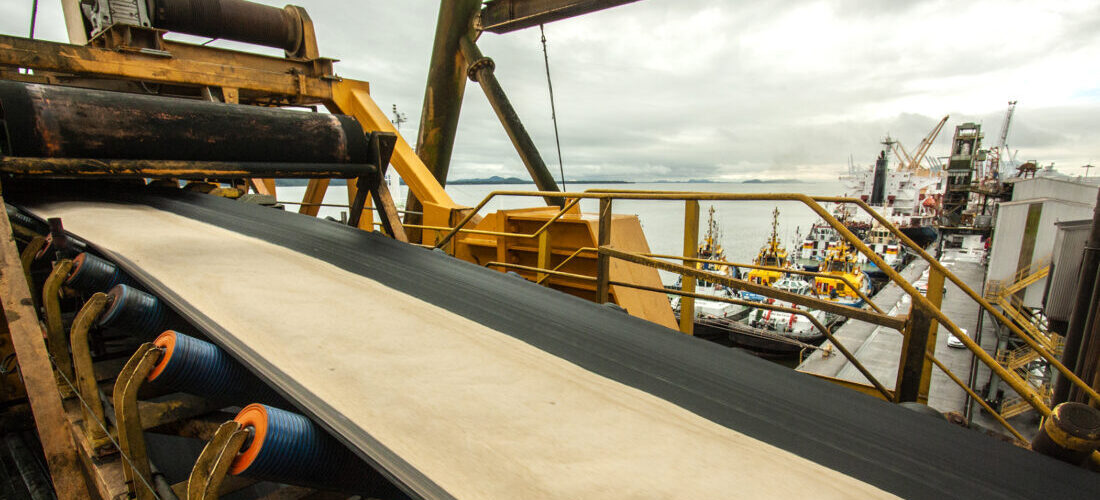
A World Desperate for Sugar Sees It Pile Up in Brazilian Ports
Nov, 01, 2023 Posted by Gabriel MalheirosWeek 202343
The world needs sugar from top producer Brazil more than ever to help ease global shortages. Congestion at key Brazilian ports means the country can’t ship sugar fast enough.
More than a decade after port logjams plagued Latin America’s biggest economy — sending sugar prices rallying — logistics are being stretched to their maximum again. Approximately 70 vessels are waiting some 20 days to load over 3 million tons of sugar in the country, shipping agency SA Commodities said. That’s equivalent to a month of exports.
To make matters worse, a fire at Paranagua, Brazil’s second-biggest port, has shut down a terminal and impacted operations at another facility. And all of that is happening just as a drought in the Amazon region is rerouting grain shipments from northern ports, increasing competition with sugar in the southeast.

“This is the first time in years that Brazil tested its maximum logistics capacity,” said Ricardo Carvalho, commercial director at BP Bunge Bioenergia SA, a joint venture between the British oil major and one of the largest crop traders.
Bumper soy and corn crops have coincided with sugar production that’s expected to hit a record this year. While bigger crops should in theory help ease global sugar shortages that have already sent prices to their highest since 2011, a repeat of last decade’s logjams is keeping the world undersupplied.
“The dependence that the world is creating on Brazilian sugar is frightening,” Mauro Angelo, chief executive officer of Alvean, the world’s largest sugar trader, said in an interview in Sao Paulo last week. The company is controlled by Brazilian producer Copersucar SA.
For many sugar traders, it’s feeling like the early 2010s all over again. Brazil faced severe logjams back then, followed by a fire in the port of Santos that disrupted loadings. Competition with grain exports was also strong, only easing when a wave of logistic investments in the country’s north started operating.
But unlike then, conditions now paint an uncertain future. With high interest rates and rising construction costs, relief for sugar markets may only come with a new terminal in Santos. Cofco International Ltd. is expected to start operating the facility in 2025, said Marcelo de Andrade, managing director of soft commodities at the trading unit of China’s largest food company.
“The world needs sugar. Brazil has sugar, but can’t ship it, so prices have to rise,” de Andrade said in Sao Paulo last week. “How long will the party last? Until Cofco’s terminal starts.”
But even then, the pressure would ease for only about two to three years, before Brazil’s total agricultural production grows enough to stretch capacity again, Alvean’s Angelo said.
For now, the tight logistics has put the sugar markets in alert mode.
The chart below shows Brazil’s sugar exports in containers (HS 1701), measured in TEUs, according to the DataLiner maritime information service.
Brazilian sugar exports | Jan 2019 – Sep 2023 | TEU
Source: DataLiner (click here to request a demo)
The Amazon drought means that about 1 million tons of grains that would normally travel in barges through the region is being directed to ports in the southeast, according to Carvalho of BP Bunge. While water levels have been improving after reaching historical lows, sugar logistics should remain under pressure.
Brazil will start harvesting its new soybean crop later this year, and many terminals that are now shipping sugar will flip to the oilseed next year. Others will stop for annual maintenance.
Many are already struggling with heavy rainfall, which prevents terminals from loading sugar at the risk of ruining the product.
“The current record sugar crop is testing the limits of the tight port logistics particularly in Santos,” Thierry Songeur, a general manager at Paris-based trader Sucres et Denrees SA. “The market is vulnerable to the weather news, with heavy and long lasting rains likely to trigger a bullish move.”
Saturday’s fire at a conveyor belt servicing the CAP Terminal at Paranagua only adds further pressure to a strained market. While the nearby Bunge Ltd. facility is expected to return to full operations this week or early next week at the latest, it’s unclear how long CAP will be offline.
The terminals held mostly grains, which terminals and railroad operators typically prefer due to higher profitability. That likely means competition to ship sugar and other cargo will increase at other Brazilian ports.
Port logjams have already forced sugar millers in Brazil to get creative, finding third-party warehouses to store the sweetener. Água Bonita was one of the producers that rented extra space.
“It is a problem for sure,” said managing director Flavio Ribeiro. “Even though having a lot of product to sell is the kind of problem we like to have.”
Source: Bloomberg
To read the original news publication: https://www.bloomberg.com/news/articles/2023-11-01/a-world-desperate-for-sugar-sees-it-pile-up-in-brazilian-ports?utm_source=website&utm_medium=share&utm_campaign=copy
-
Economy
Feb, 24, 2022
0
Agribusiness ended 2021 at ‘zero to zero’
-
Meat
Oct, 27, 2021
0
China to resume Brazilian beef imports again soon
-
Trade Regulations
Sep, 21, 2020
0
MERCOSUR-EU AGREEMENT MAY INCLUDE ENVIRONMENTAL DECLARATION
-
Grains
Nov, 24, 2023
0
Drop in Brazilian Wheat Output Alters Commodity Price Dynamics

